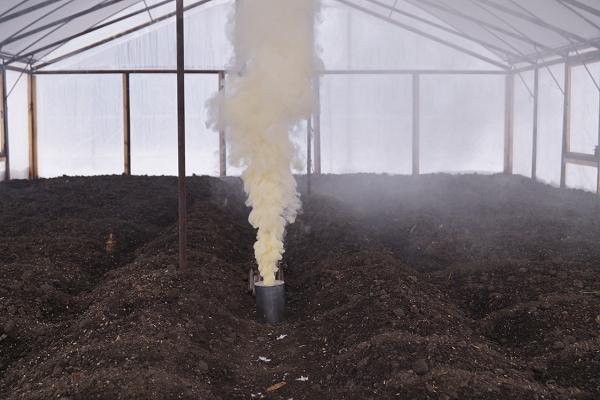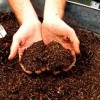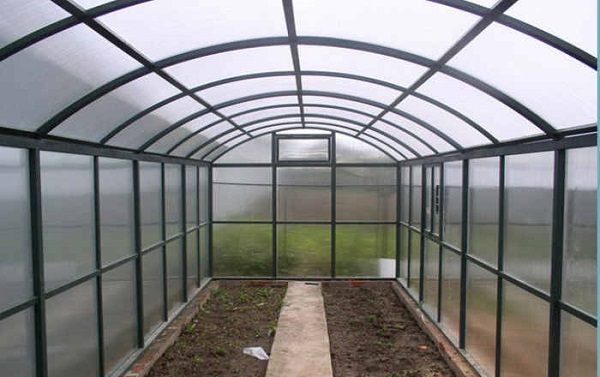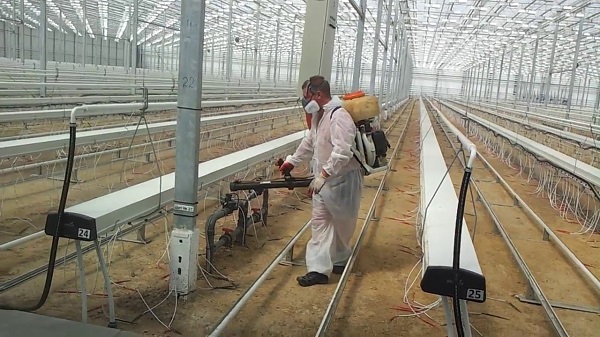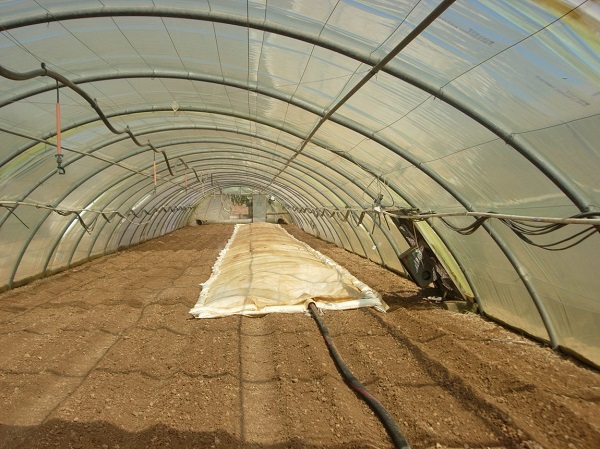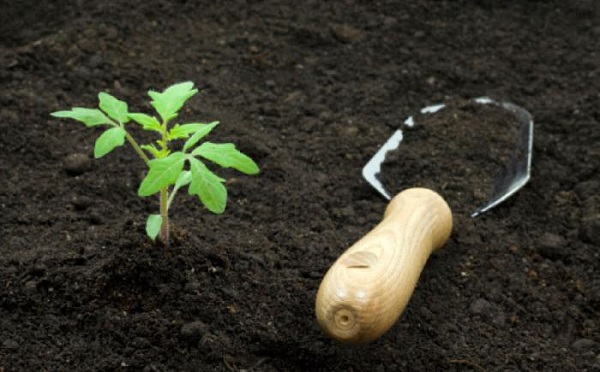How to process a greenhouse after winter before planting
Content
Why process
The preparation of the greenhouse begins in early spring, long before the planting of plants in it, while the snow reigns in the garden, and the seedlings are just about to emerge on the windowsills. The main harvest is done in the fall, when after harvesting, all plant residues are removed. If the plants suffered from any disease or the attention of harmful insects, it is possible that the larvae of these pests, pathogenic plants or spores remained to winter in the upper layers of the soil, on walls, ceilings, shelves, equipment, supports and garters. When favorable conditions are created, they will certainly show activity, which means that next year's harvest will be under threat.
That is why the greenhouse after winter is not only repaired and cleaned, but a number of decontamination measures are carried out. In addition, you need to take care of increasing the fertility of the soil, it is hardly possible to leave it for several years under fallow, and nutrients are depleted from year to year.
The tops of vegetables, stems of flowers - any greens that were grown indoors should not be left, hoping that they will become fertilizer, especially if the plants have suffered diseases. Such plant residues can do more harm than good, they need to be removed, or better destroyed. Fungal spores, harmful bacteria, larvae and eggs of pests are very small, they can hide on pegs, supports, garter ropes, in the slightest cracks at the joints of walls and ceilings. You cannot get rid of them by adhering to the rules of crop rotation or sowing siderates before planting the main crops. These measures should be combined with chemical treatment of the entire greenhouse in the spring from those infections and pests that were seen on the plants during the growing season.
Replacing the top fertile layer of the earth will also help get rid of harmful microorganisms and will increase the yield. If it is not possible to do this, you can collect a layer of soil 10-15 cm thick, warm it over a fire, and then mix it with complex fertilizers. It must be remembered that it is possible to cultivate the land with chemicals only in the fall, but not in the spring before planting. In the spring, you can use only a solution of copper sulfate or Bordeaux liquid.
Video "Preparing the soil in the greenhouse after winter"
How to prepare the soil for planting after winter and how to degrease it with Fitosporin is described in this video.
Cleaning
First of all, the greenhouse should be carefully examined after winter. In the process, you will certainly find that something is rotten or broken somewhere. Therefore, it is necessary to fix and replace all damaged or faulty items. Racks, shelves, partitions are tweaked, replaced, painted. All glass canvases must be thoroughly washed on both sides with any product created for this, rinsing off with a strong jet of water in order to allow the maximum possible amount of sunlight.Film or polycarbonate coatings that have not been removed for the winter are carefully examined and washed with soapy water. The film may need to be replaced in some places.
Most likely, the ground in the greenhouse is still covered with snow. Some owners, after the autumn harvest, dig up the soil, and then throw it with clean snow, which lays there all winter. In early spring, when cleaning, you need to speed up the melting process; for this, the snow is covered with something black, it can be just earth, humus, compost or ash. It is enough to scatter in a thin layer so that the white snow does not reflect sunlight. If you use heaters, the process will go faster.
When the earth warms up enough so that it can be dug up, it is time to move on to disinfection, that is, the treatment of the greenhouse itself and the soil inside it with substances that will protect future plants from diseases and pests.
Disinfection
If the plants suffered from some diseases, then the main fight against them and their distributors occurs in the fall after harvesting. In the spring, a milder preventive treatment is carried out. So if last season vegetables were sick with late blight, black leg, white rot, keel, a gall nematode was discovered, then bleach is used. Even if a good treatment was carried out in the fall, it is worth spraying everything with a liquid solution in the spring. First, 400 g of lime is thoroughly stirred in 10 liters of water, and then let it stand for at least 4 hours. Transparent walls and roofs are treated with water, which has settled on top, and wooden structures - with sediment.
At least 1 month before the appearance of plants in the greenhouse, it can be treated with carbation. This is done if keels, root rot, black leg, fusarium or verticillary wilting have been seen. 2 liters of carbation is treated with 1 square meter of earth, then it is dug up.
If you need to act on a spider mite, mold, whitefly larvae, use a formalin solution. They are treated in greenhouses at a temperature of no higher than 10 - 12 degrees, otherwise it will simply evaporate, but you need it to be inside for a while. The entire area is watered with a 40% formalin solution (a person should only work in a gas mask), and after that, it is advisable to increase the temperature in a tightly closed greenhouse to +25 degrees. It is advisable to keep the greenhouse closed for at least a day, only after that it is thoroughly ventilated. Formalin can also be used only a month before settling in the seedling greenhouse. They say that formalin somehow persists (or even concentrates) in concrete, so if there is such a possibility, it is better not to water the concrete elements with it.
Prevention against diseases such as all kinds of bacteriosis, powdery mildew, various rot and spotting, late blight, rust, curliness, scab is carried out with copper sulfate. In the fall, a large dose of strong concentration is used, and in the spring it is enough to take a ten percent solution and spray the entire inside of the greenhouse with it.
Of course, the chemical industry has created special drugs to fight certain bacteria that carry and provoke disease. These are "Fitoflavin-300" - against all kinds of rot, "Bayleton" - against Alternaria, powdery mildew, gray rot, "Acrobat MC" - against late blight and downy mildew. All of them have proven themselves well, the main thing is to carefully study the instructions before using. Not all drugs can be used in the spring.
The most common spring disinfectant is sulfur. Lumps of sulfur are laid out on metal sheets along the entire length of the building, poured over with kerosene (or emitting coals are placed next to it) and set on fire. Take approximately 50 - 80 g per 1 cubic meter of area, if among the alleged pests there may be a spider mite, the dose is doubled.Processing is carried out only after all cracks and cracks have been caulked to ensure tightness. Keep the room closed for at least 3 days. Of course, the person who does all this must provide for methods of protection - a respirator, goggles, gloves (or better, a protective suit and a gas mask), since smoke is very dangerous not only for pests. There are special sulfuric smoke bombs that are more convenient to use. Sulfur, or rather its smoke, has a destructive effect on metal, so it is better not to process greenhouses with a metal frame with it.
It must be said that disinfection of the greenhouse in the spring needs to be done, but it is advisable to focus only on those diseases and those pests that have been precisely noticed, the excess effect of poisons will not benefit.
All those things that will be near the plants can bring them infection, so it is worth remembering and carefully processing all the tools, dishes and other inventory. Copper sulfate (50%) or bleach (50 g - per 1 liter of water) are perfect for this.
Wooden structures can be treated with copper sulfate, and then whitewashed with lime, while metal structures can be simply scalded with boiling water.
The best way to prevent the spread of diseases is to completely replace the soil, but this is rarely possible. Usually, after all the disinfecting measures in the greenhouse, the ground is spilled with boiling water, then dug up, adding a spring dose of fertilizers.
Video "Greenhouse processing from late blight"
The video says about the correct processing of the greenhouse from late blight.

